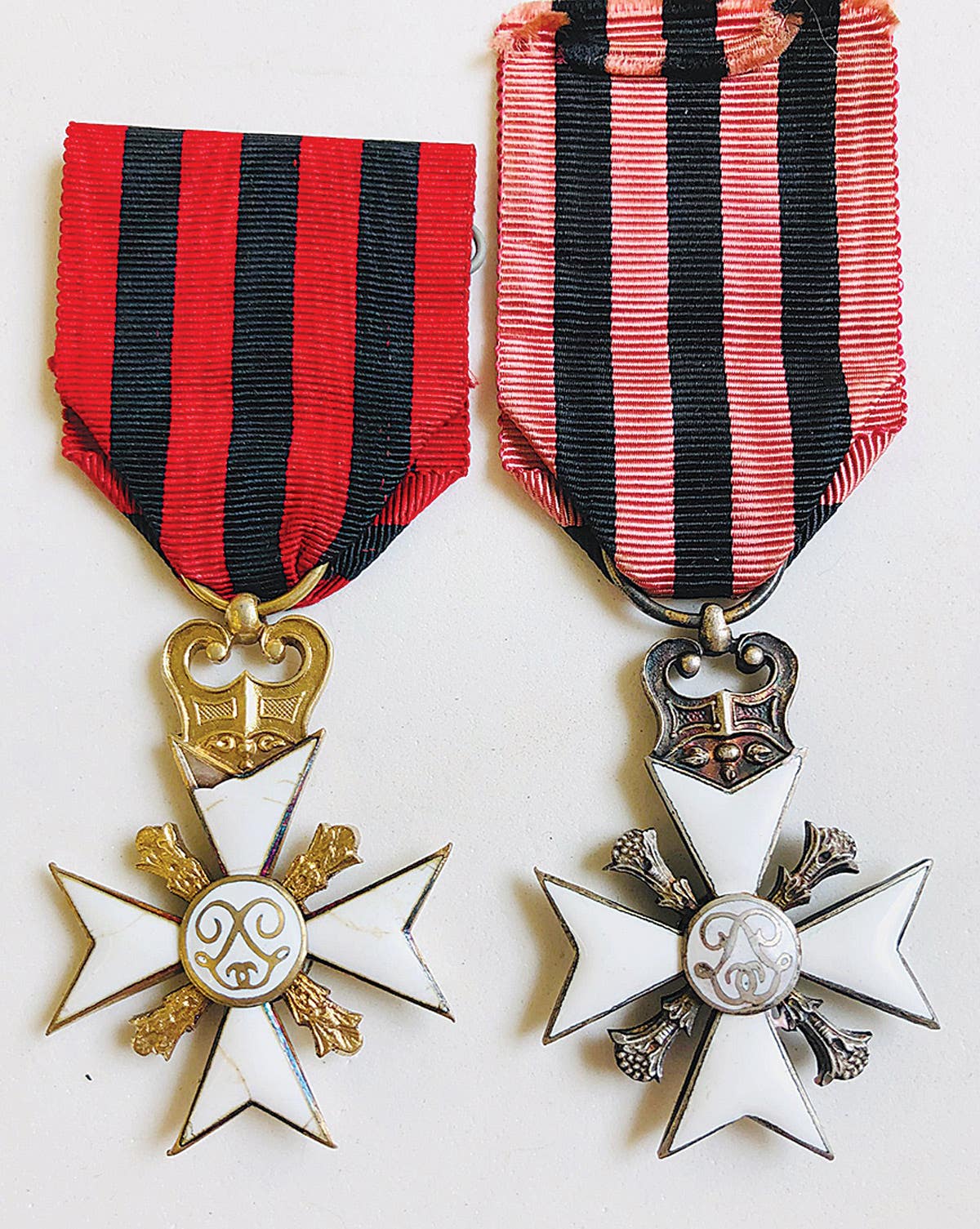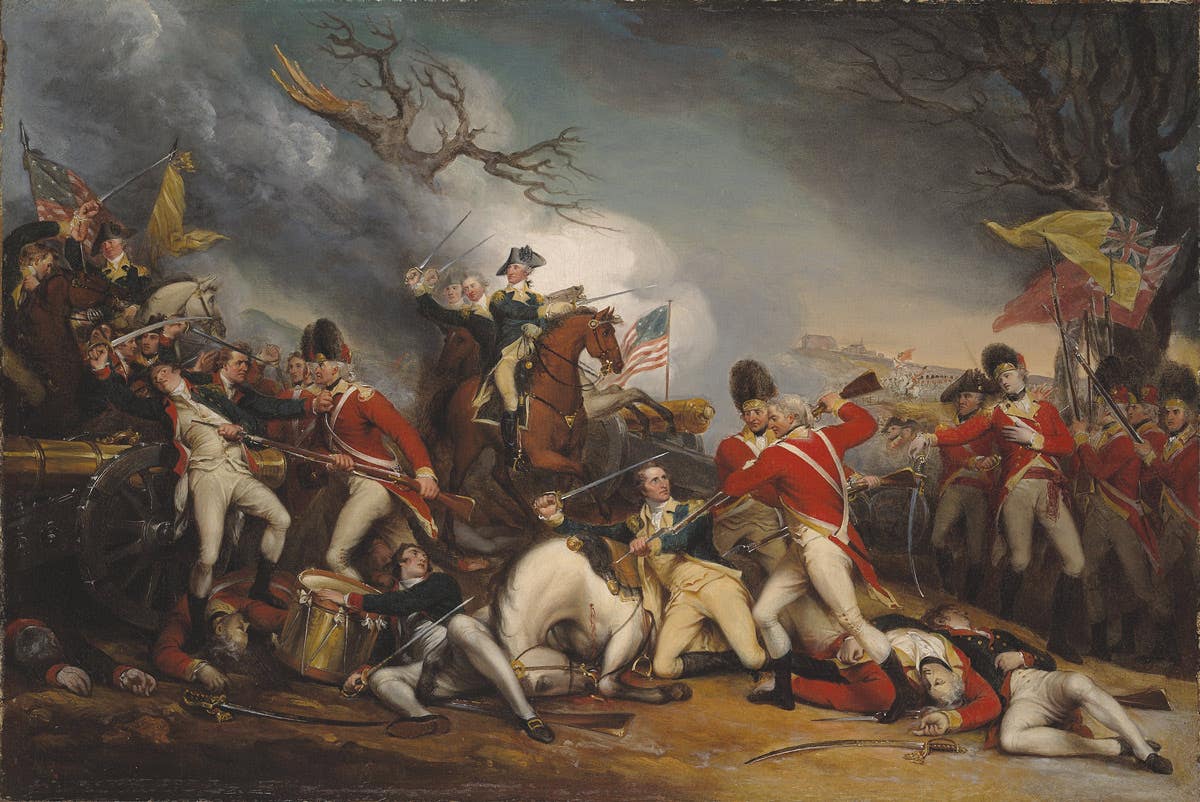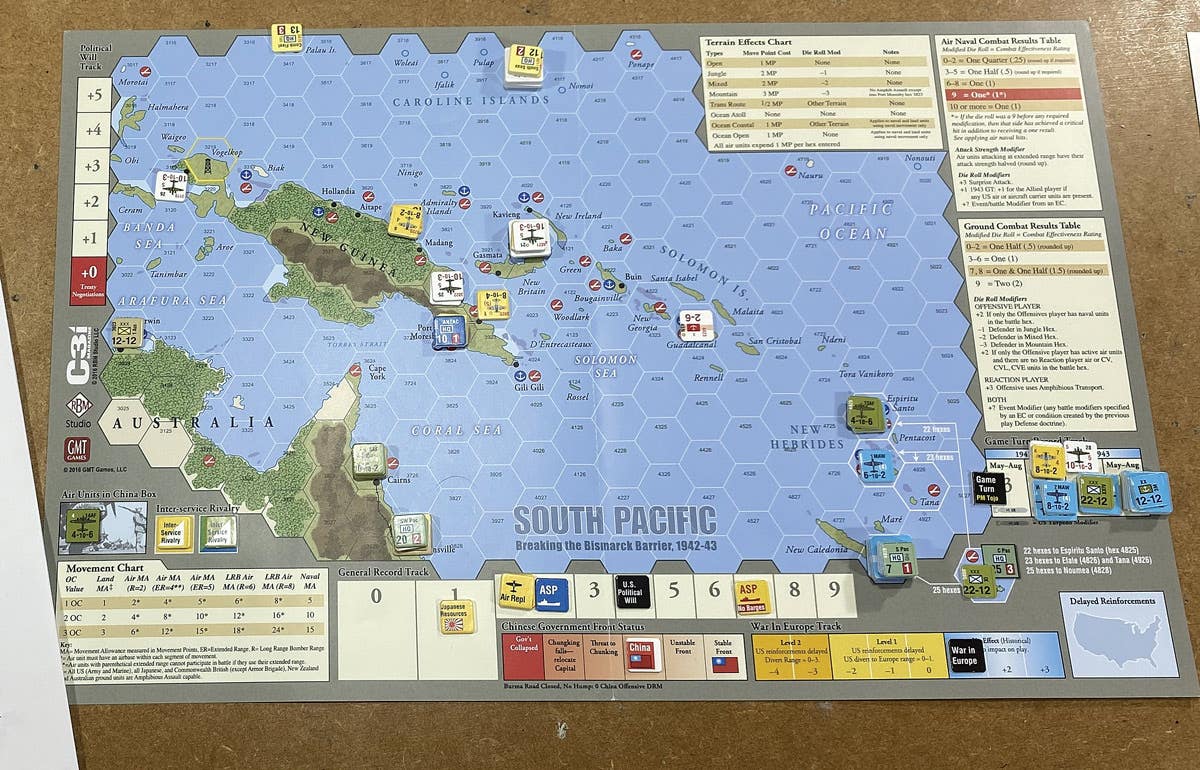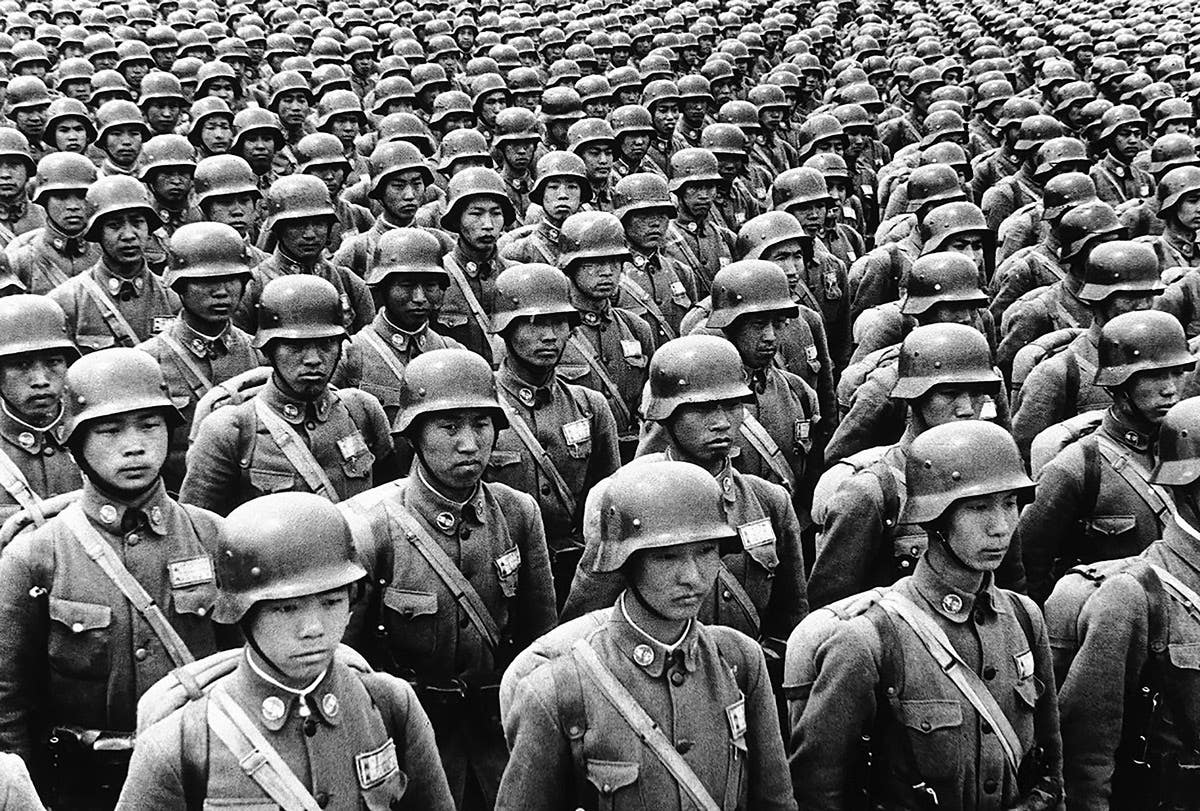Since the 19th Century, Germany has greatly influenced the World’s Military Helmets
From Pickelhauben to Coal Scuttles, nations have copied Germany’s military helmets. We show you how to recognize these “nearly” German helmets
With its wide brim, rounded dome and short visor, the German helmet is easily recognizable—or is it? To collectors of military headgear, a German helmet can be spotted and correctly identified at a militaria show from several tables away. The design of the German helmet was considered so good that many nations freely borrowed it when producing their own helmets. These designs often confuse novice collectors, as many of these were actually influenced by the striking silhouette that defined the German warrior through two World Wars and into the modern era. In fact, German helmet designs have influenced—or even been outright copied by—many nations in the modern era since Germany was unified in 1871 following their victory in the Franco-Prussian War.
THE LONG REACH OF SPIKED HELMETS
Many of the armies of the German states, notably those under Prussian “domination,” entered the Franco-Prussian War wearing traditional spike helmets—what collectors refer to today as Pickelhauben. These were actually influenced by Russian designed helmets some years earlier. In the years that followed the war, all of the German states eventually adopted the Pickelhaube. The spiked helmet would influence uniforms from around the world to such far off lands as Sweden, Romania, Peru and even the United States.
“There was a huge spurt of interest after the Franco-Prussian War. Armies from all over the world tried to emulate German and Prussian military themes,” explains Pickelhaube collector Joseph P. Robinson. “The Pickelhaube was one of these copied themes much like the kepi was before it.”
From the 1870s until the turn of the century, the American army utilized a variety of German-inspired spiked helmets. These were first introduced as plumed helmets for horse soldiers around 1872 and were cork-covered, dark black felt, high-domed helmets with various colored horsehair plumes (depending on the unit type). From 1881 through 1902, the United States used a series of dark blue, black, and even white cork helmets. These were typically used as part of the dress uniform during this period, although the white cork helmets were used in the field in some instances during the Spanish-American War.
Likewise, those summer white cork helmets were officially intended to be used without any insignia or trimmings, but enterprising soldiers often transferred the brass accouterments and created an unauthorized helmet. By 1904, the Americans phased out the spiked helmets, although some National Guard units and even military bands would continue to wear them into the 1920s.
“The helmet fell out of favor as the German Empire did,” adds Robinson. “It was never intended to be functional, but rather, just a decorative helmet.” It is worth noting that many surplus helmet parts were sold in the first half of the twentieth century through catalogs. Hence, these helmets were bought by fraternal organizations. These often show up as “military” helmets but, in fact, are nothing more than ceremonial “lodge” headgear.
Not practical for the modern combat of WWI, the Germans also phased out the Pickelhaube and replaced it with steel helmets. However, many nations would continue to use spiked helmets for honor guards and as part of a dress uniform for many years. It was only in recent years that some nations (e.g., Chile) finally retired the striking looking helmets.
STAHLHELM INFLUENCES
During WWI, most nations completely updated their uniforms. This included the introduction of the modern steel helmet. Although Germany was on the losing side of the conflict, many military planners carefully studied the Germans’ helmet design. Ironically, it was the victors that continued to utilize their own existing styles of helmets. Both England and France headed into WWII wearing helmets that had been little more than updated from their original designs.
After Germany surrendered in 1918, it was required to vastly reduce the size of its army. Thus, many of Germany’s helmets were handed over to the victors. Nations such as Poland and Finland used the German M-16/18 helmets, often with reworked liner and chin strap systems. Some of these helmets even remained in Russia to be used by both sides during the country’s brutal civil war. Later, anti-aircraft units of the new Soviet Union also received reworked German helmets. The German WWI helmet was reissued to armies around the world for many years to come. Even today, as the American military continues its hunt for terrorists in Afghanistan, M-16/18 helmets are occasionally uncovered. Nearly 90 years of service is proof that the heavy “coal scuttle” helmet was a durable piece of equipment.
In addition to those helmets that went to the conquerors, many German helmets were supplied to its allies, including the Ottoman Empire and Bulgaria. Austria-Hungary received nearly half a million German-produced helmets during the war. And while the Austrians developed their own helmet, the “Berndorfer,” the German ally eventually adopted their own M-16/18 style helmet that featured a slightly recessed liner rivet, but is almost otherwise indistinguishable from a German helmet. All of these various “Austrian” helmets were reissued after the war, to the nations carved out of Austria-Hungary including Czechoslovakia and Yugoslavia. In the inter-war era, many of nations used the old German helmets—but eventually adopted the French M-15 “Adrian” design.
The German design, however, clearly provided better protection to the wearer than either the Adrian helmet or the Brodie-based U.S. or English helmet. The United States experimented with a number of designs throughout the 1920s and tested their so-called “Liberty Bell” design before continuing to rely on the British-designed M-17 (which was finally replaced by the M-1 in 1940).
Some nations even manufactured their own variants of the German M-16/18. The Irish Vickers helmet, or Model 1927, is one that truly stands out, as it retained the basic German shape and liner system. What makes it unique is that it was manufactured by the British Vickers Ltd. Company. With the start of WWII, the Irish quickly adopted the British MkII helmet instead and relegated the Vickers helmets to civil defense duty. Thus, many are found today with a coat of thick white paint, denoting service as a fireman or other auxiliary use.
Likewise, Swedish and Czech military designers based their first helmets of those of the German design. These early copies retained the notable side lugs. Interestingly, these lugs were designed to hold an additional steel plate on the front of the helmet, but there is little evidence that any other nation ever attempted to utilize such a plate. In any event, by the 1930s, both the Swedish and Czech designs moved away from the German style. Their earlier German styled helmets do occasionally cause confusion for novice collectors.
“The most common ‘look-alike’ helmets would have to be those of the Czech M-19 design. They were actually made from reworked Austrian M-16 helmet shells,” explains advanced helmet collector and dealer Ken Niewiarowicz. He noted that the Czechs added new liners, split-pins, chin straps, and paint in the 1920s and 1930s. “In a few instances, actual German M-16 helmets have been seen that were reworked as Czech M-19s.”
The Swiss M-18 style of helmet is evidence of the continual influence of the German design. The traditionally neutral nation continued to use this helmet (with minor modifications) until the 1980s. Likewise, Spain and Portugal relied on the basic German silhouette for their helmets through the 1920s and 1930s, including the Spanish M26. Interestingly, Portugal even briefly used a Japanese produced helmet that can be described as somewhat of a hybrid Japanese/ German helmet. This, in turn, led to an even more “Germanic” styled design with their M-40 helmet, that featured a more rounded dome with less flair but still undeniably influenced by the German helmets of the era.
Even with the end of WWII, the German helmet lived on in design. Despite the brutal fighting against the Germans, the first true Yugoslavian helmet closely bears a resemblance to the German M-35. Various South American nations used parade and combat shells that featured the basic shape of the German helmets. In fact, the Chilean Air Force, to this day, uses a decal that closely resembles the Luftwaffe eagle in flight, replacing the swastika with the Chilean star.
THE SPANISH MODELO Z
As Franco’s fascist government of Spain became loosely aligned with Germany in the late 1930s, the country adopted a helmet that is often confused with the German WWII M-35/42 helmet. Using seven rivets instead of the German helmet’s three rivets to hold the liner and featuring a clip on the front to hold a badge, the helmet is easily distinguishable as a Spanish M-42 or “Modelo Z.” However, this helmet often appears in army surplus stores and on online auctions as a German or “German produced” helmet. In fact, this helmet model was produced in Spain and not on “German equipment” as many online auctions often claim. While there are some published examples of this helmet being used in small numbers by the Germans any encountered with German decals should be considered fakes, or possibly a helmet used for historical reenactment.
THE ORIGINAL AXIS HELMET
Spain was not the only country to use a helmet that so very closely resembled the basic German Model 1935 (M-35) helmet. Hungary licensed the helmet design and produced their own helmets under contract. It is interesting that this did not include license for the liner; thus, these helmets featured a fairly antiquated three-pad liner system rather than the multi-fingered German M-31 liner. The placement of the rivets is slightly different, and the helmet featured a loop in the rear, which served as a belt loop or hanger. These helmets were used in large numbers by Finland, and both Hungary and Finland relied on these helmets in the post-war years.
Wartime Hungarian helmets were painted a tan color, while the reissued postwar versions received a thick coat of green paint. The post-war reissues are most often encountered for sale. Original prewar Hungarian helmets should be considered quite rare. Furthermore, the Finnish helmets, used before and during the war, occasionally were retrofitted with a new liner. The new liner required the addition of another set of holes for the rivets. Therefore, the Finnish helmets are found with five—rather than three—rivet holes.
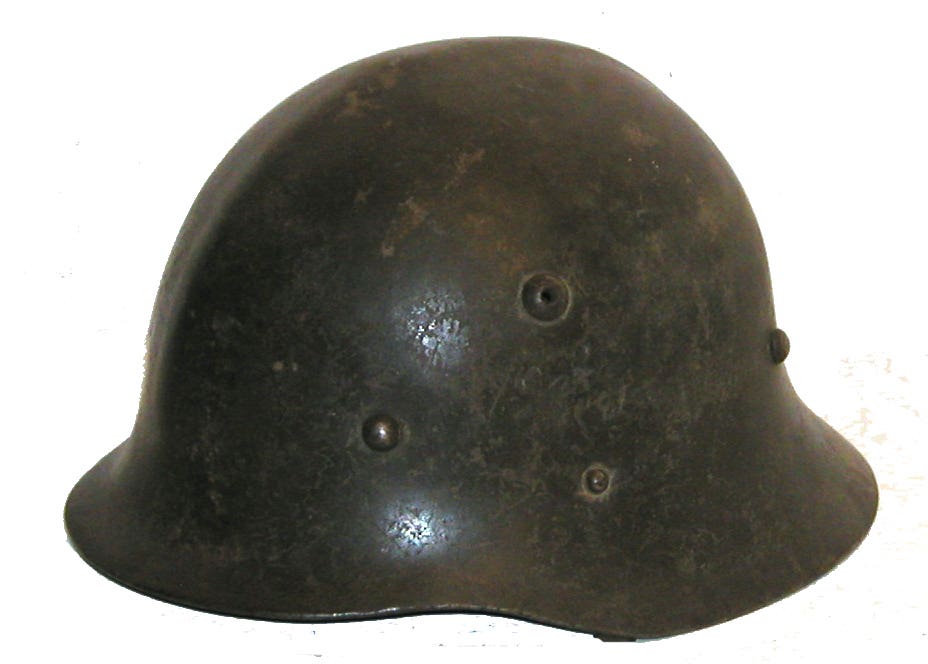
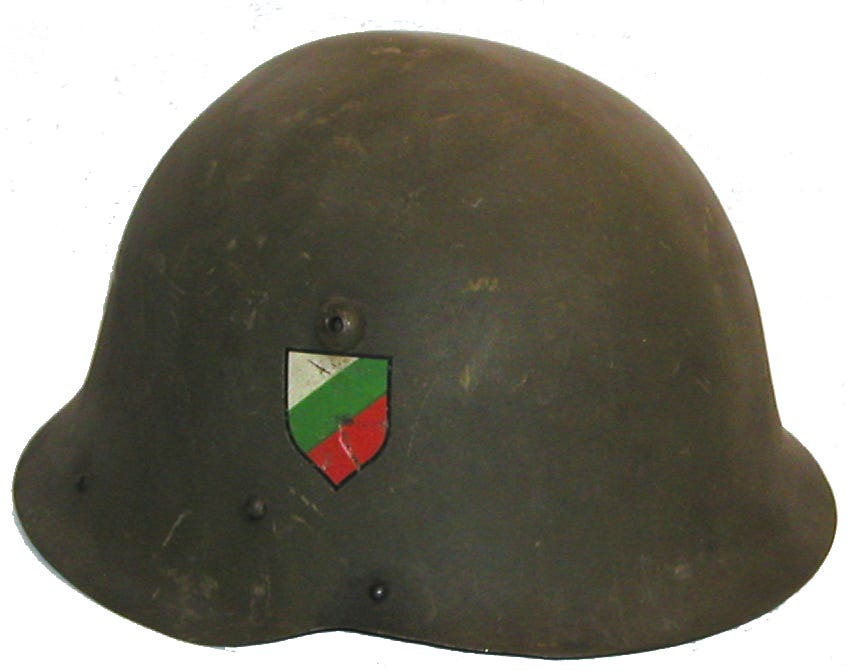
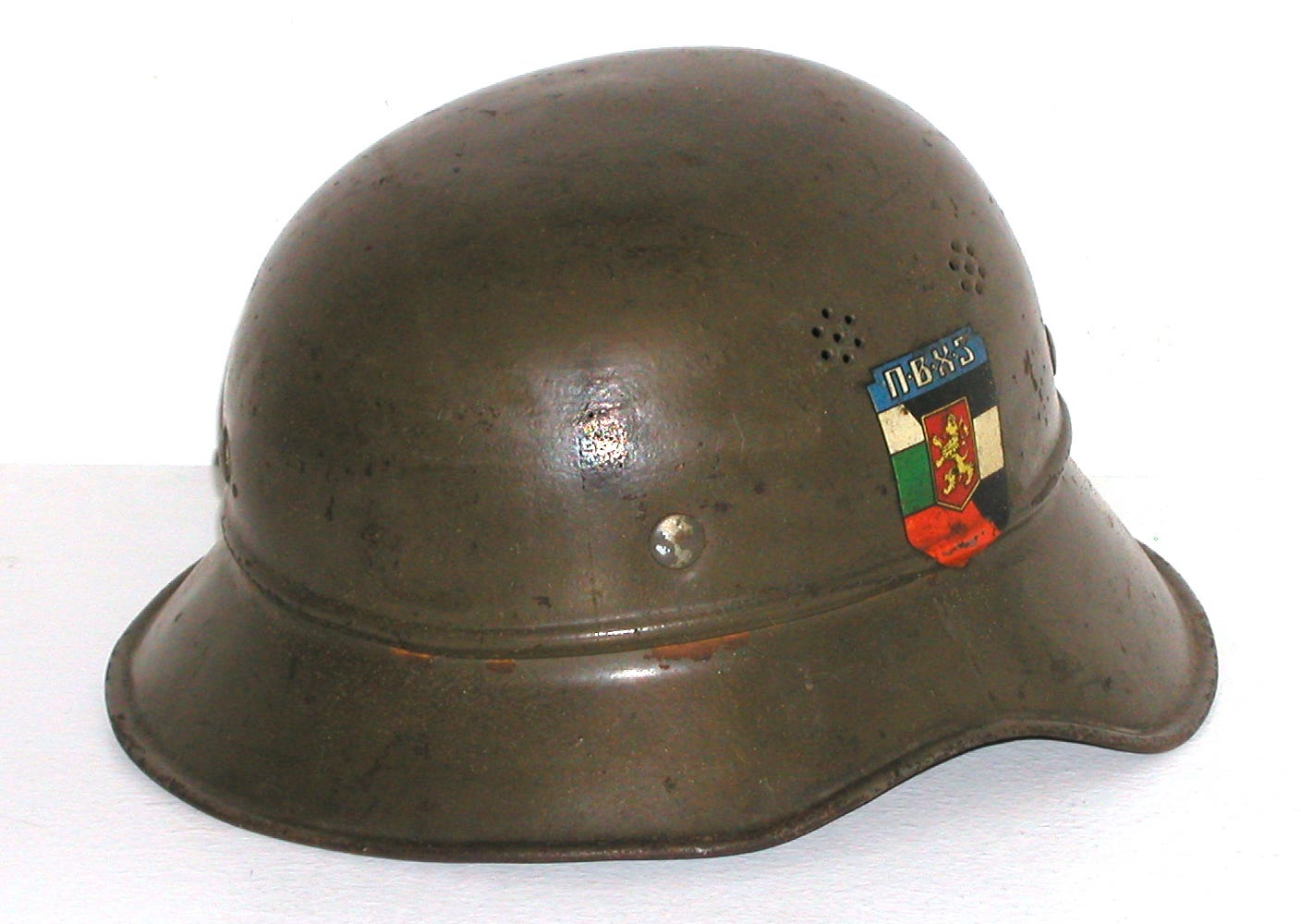
The Kingdom of Bulgaria also relied on Germany when it came to combat headgear. The nation, while traditionally influenced by Russia, allied itself with Germany in WWI and received some helmets during the war. Bulgaria continued to use the M-16/18 helmets until the 1930s when a new helmet design was introduced. Known as the M-36, the new helmet appeared in three basic model variations, each retaining a shape that was similar to the German helmets. Two of the models were supposedly manufactured under contract in Germany, but some collectors maintain that this is unlikely.
“The popular story says that the M-36 was made in Czechoslovakia, while some sources say that the helmets were made in Thale (Germany), but I do not believe this at all,” emphasizes Teodor Muhovski, a Bulgarian helmet collector who often jokes that he is sure these were produced in Europe. He stresses that the helmets were likely produced at the State Military Factory where the liners were made as well. Still, the influence from the German helmets is unmistakable. “I have always considered the M-36—especially the first type—to be a grandchild of the German M-16.”
There is no arguing that another Bulgarian helmet was most certainly produced in Germany. This is the so-called “Gladiator helmet” used in large numbers by the German air defense or Luftschutz. These helmets were supplied in large numbers and, while rare for years, have recently flooded the market. At the time of the writing of this article, Bulgarian helmets might just be the most affordable of these WWII-era helmets and are likely to appreciate in value.
GERMANY’S OWN HELMET
Besides the various helmets that look German but weren’t made in Germany, are the helmets that did originate in Germany but were used by other nations. In most cases, these aren’t as desirable to collectors because they are not “true” German helmets. Regardless, many nations used the M-35 helmet during WWII. Among the most sought-after, and thus highly faked, are the helmets issued to the Spanish volunteers who fought on the Eastern Front—the “Spanish Blue Division.” These helmets were issued with the standard Heer eagle decal but instead of having the German tri-color national flag on the other side of the helmet, a Spanish decal of red and yellow was used.
Likewise, other German volunteers, including those from Latvia, France, and Holland, used the German M-35 (and later M-40 or M-42) helmets. The pro-fascist puppet government of Holland created their own unique insignia. In all cases of these volunteer helmets, examples should be viewed with some skepticism, especially when they show up for auction on eBay and other Internet sites. All of these have been heavily faked over the years.
The rarest of these foreign-used M-35s are arguably those used by Nationalist China and featured a unique decal and/or stencil. However, it should be stressed that many examples that have surfaced over the years are suspected of being fakes, oftentimes with the decal obtained from a 1/35-scale model airplane kit.
Once the war ended, Germany’s helmets continued to be used for other purposes. Many were reissued to police units around Germany, oftentimes with the offending swastika either scraped off or covered. Likewise, fire and police units around Europe used these surplus helmets. Norway reissued huge numbers to their army through the 1960s.
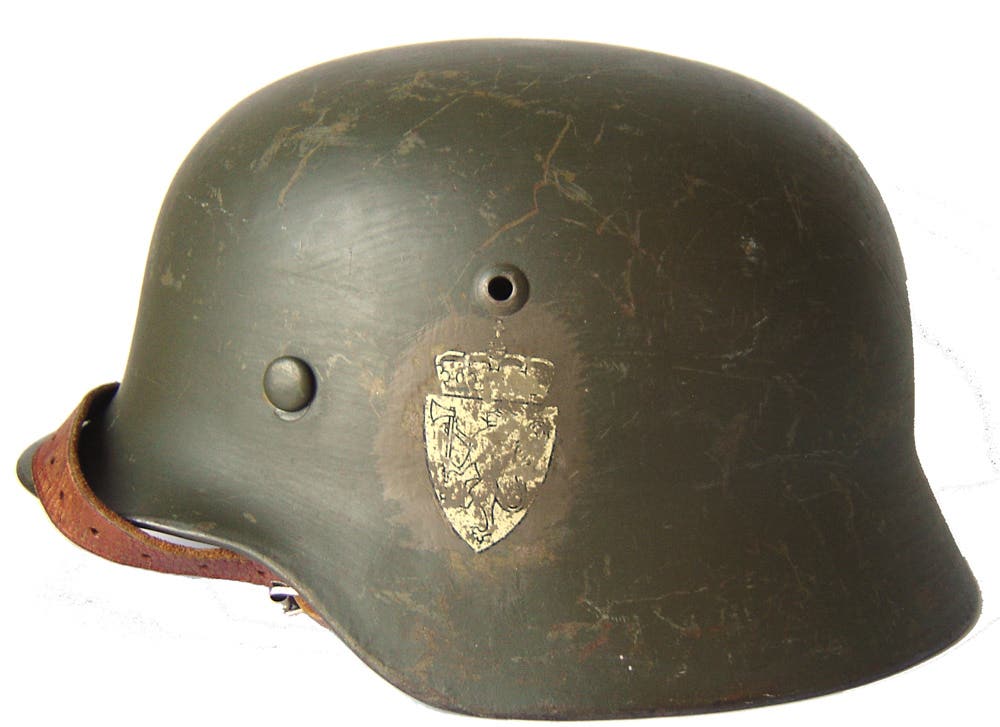
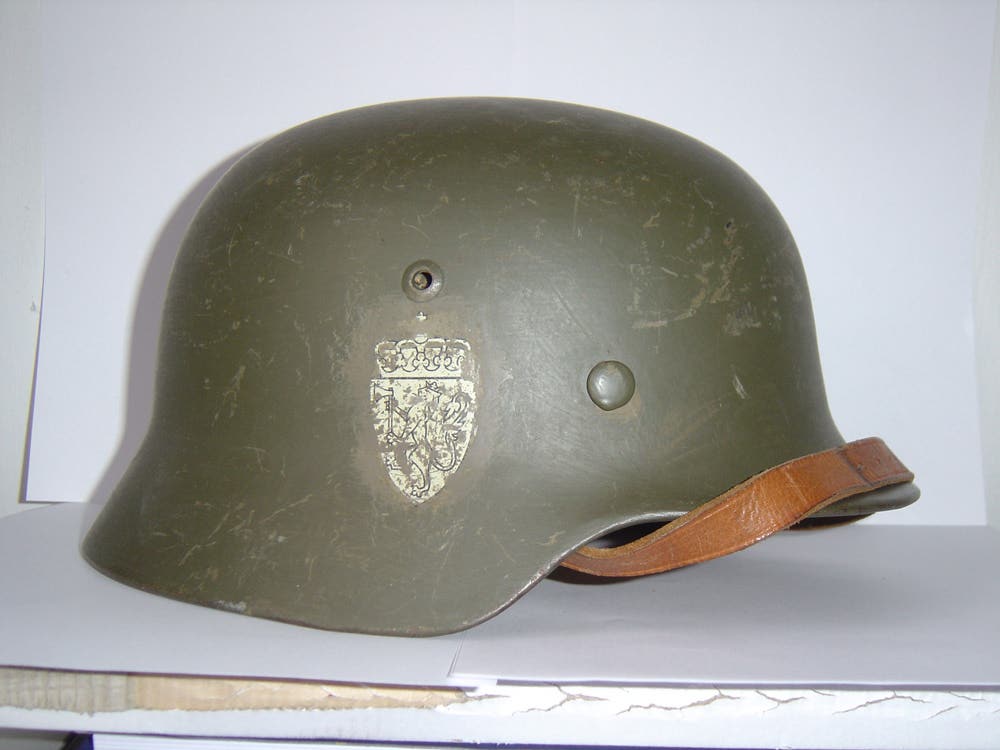
“The Norwegian military confiscated large portions of the German war machinery at the end of WWII. The Norwegian economy was very weak, and the mentality was to reuse whatever could be reused,” emphasizes Erik B. Wiborg, an advanced collector of German helmets, who has seen many Norwegian helmets over the years. “The German helmets were reworked. They were disassembled, and the leather replaced if so needed. The shell was either over-painted or sandblasted before (being) repainted. After assembly, they would receive the Norwegian decals. The helmets were in use with the Norwegian military into the 1970s.”
There were attempts to take the reworking a step further, adds Erik, “The Norwegian military also experimented with using a ‘cut down’ version of the German helmets.” These had most of the visor and side rim removed, creating a more rounded helmet. These were issued to air defense troops and were meant to be worn backward.
Most of the basic Norwegian reissues, which once could be bought for a few dollars, have also started to become somewhat rare as many collectors stripped the post-war Norwegian paint and decals in the search of possible “hidden treasure” such as an otherwise undisturbed Waffen-SS helmet. In most cases, the efforts probably didn’t result in much as it was likely that the German paint and decals were as often stripped off before the new coat of paint was applied.
This helps explain a cache of helmets with tan colored paint found in recent years in storage in Eastern Europe. Rumors circulated that these might have been un-issued Afrikakorps helmets—despite the fact that there is no proof that the German military ever factory painted any helmets tan. It was more likely that these were repainted for use by the Egyptian Army in the 1950s. Changing events in the Middle East resulted in these helmets never having been shipped to Egypt and, hence, they sat in storage for 50 years. No doubt, other German helmets remain in storage, possibly intended for reuse for civil defense.
Even today, however, the nearly 90-year-old German helmet design lives on. With the wars long over, the German M-16 and the later M-35 still continue to influence helmet design. It is impossible to view the current crop of ballistic military helmets being used around the world without being able to see a bit of the classic German lines.
You may also enjoy
*As an Amazon Associate, Military Trader / Military Vehicles earns from qualifying purchases.
Peter Suciu is a freelance journalist and when he isn't writing about militaria you can find him covering topics such as cybersecurity, social media and streaming TV services for Forbes, TechNewsWorld and ClearanceJobs. He is the author of several books on military hats and helmets including the 2019 title, A Gallery of Military Headdress. Email him and he'd happily sell you a copy!




